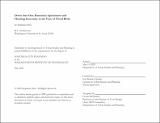| dc.contributor.advisor | Huntley, Eric Robsky | |
| dc.contributor.author | Silva, Stephanie | |
| dc.date.accessioned | 2022-08-29T16:37:48Z | |
| dc.date.available | 2022-08-29T16:37:48Z | |
| dc.date.issued | 2022-05 | |
| dc.date.submitted | 2022-06-07T17:50:16.375Z | |
| dc.identifier.uri | https://hdl.handle.net/1721.1/145169 | |
| dc.description.abstract | On September 1st, 2021, hurricane Ida struck New York City bringing record rainfall with 3.15 inches of rain in one hour and New York’s National Weather Service’s first ever Flash Flood Emergency. By the time the storm cleared, 13 New Yorkers had been killed. Eleven of these individuals were in basement apartments, and 5 of the 6 homes where these fatalities occurred were illegally converted units.
Though the City of Boston has not faced fatal floods like those in New York, residents are experiencing similar dual crises of housing affordability and increasing flood risk. All the while, little to no conversations are being conducted regarding the specific vulnerability of those living in formal (legally-registered) and informal (unregistered) basement apartments. Residents appear to be driven “below ground” due to displacement pressures brought on by lack of alternative affordable housing, or by lack of eligibility for subsidized housing. Often these apartments serve as a “last resort” for residents seeking to remain in their neighborhood. For those in informal units, fear of displacement by city inspectors severely limits the availability of assistance with poor living conditions or landlord disputes, leading to further precarity.
Through a series of interviews and analyses, this thesis provides a rough assessment of the scale and areas where residents face the most extreme version of this “compounding risk” in a single neighborhood: East Boston. The presence of this form of housing is a response to the affordable housing crisis, thus I offer five recommendations for the city to expand their understanding and planning efforts. Recognizing the “paradox of exposure” faced by many residents in this informal housing, these recommendations offer a means of expanding safety and security without displacing residents. | |
| dc.publisher | Massachusetts Institute of Technology | |
| dc.rights | In Copyright - Educational Use Permitted | |
| dc.rights | Copyright retained by author(s) | |
| dc.rights.uri | https://rightsstatements.org/page/InC-EDU/1.0/ | |
| dc.title | Down then Out: Basement Apartments and Housing Insecurity in the Face of Flood Risks | |
| dc.type | Thesis | |
| dc.description.degree | M.C.P. | |
| dc.contributor.department | Massachusetts Institute of Technology. Department of Urban Studies and Planning | |
| mit.thesis.degree | Master | |
| thesis.degree.name | Master in City Planning | |
